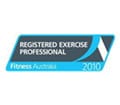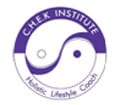How to do mobility exercises?
Mobility exercises a great and simple way to get the body and joints ready for exercises. You will see a demonstration of shoulder, hips, knees and ankle mobility exercises to get you started.
Here is a transcript of these simple mobility exercises video
Sally: Hi I’m here with Cameron Corish from Core Health Coaching, and today we are going to do some mobility exercises. Now as you know, as I said in the very 1st week, it doesn’t matter what you do as long as you do something. This can be a good starting point. These exercises are a good starting point, and if you’re a little bit further down your weight loss journey or your fitness journey, these are a good way to help activate those muscles a little bit more and get some mobile, get you moving even more, even better, even freer, even more of a weight loss machine. Okay, Cameron. I’ll stop talking now, you go.
Cameron: Thanks, Sally. With these mobility exercises, you use generally at the start of the session, even before your stretches. Now what most people understand is when we’re doing warm-ups we’re really trying to warm the muscle up. With mobility exercises, we’re really looking at the joints. The joints themselves, just going through the range of motion is actually going to help them and also it increases the heat through the joint, the synovial fluid, which then means that joint’s going to work better, and then obviously the movement’s going to be better. You get better from your results. We’ll work from head to toe. I’ll come back to the neck, but just want to start off with the shoulders. The first one, just like you’re shaking someone’s hand, and we’ll take the rotation as far back as you possibly can, and then just take it in this timing. It’s actually really good, perfect timing. We don’t want to do it too fast. What we’re doing again, we’re is using it to warm up the joint and then we’ll change directions through there. Come back still and you’re going forward. You’re almost doing like a freestyle stroke, just keeping the thumb upright through there. Do it on the opposite arm. Generally we do about 5 or 6 on each side, 7 or 8 depending upon the temperature, because again, it’s just about generating heat into the joint. For some people, what they’ll do is they’ll have restrictions. Change directions. The more that you do this, this is just going to open it up. It’s going to be free in regards to the movement.
Sally: Your shoulder’s one of the most complex joints in the body, isn’t it?
Cameron: Is the one that generally tends to go, that and the knees tend to go the first. The next one we’ve got his hips. This is going back to the old hula hoops days. We’re really trying to get the forward and back motion through the hips. Just trying keep the legs, the knees nice and straight. It’s just the hips, perfect. That forward motion is where most people are going to have issues for because they’re not used to that forward motion. Change directions. Yeah, love that. Most people get stuck on the knees. That’s great.
Sally: Why can’t I hula hoop right?
Cameron: Because you need to do that a lot faster. You need to have balance and coordination. I am a male so I do not have that.
Sally: No speed, no balance, no coordination. That’s why I can’t hula hoop.
Cameron: Okay, the next one we’re doing is through the hips. The hips is the circular motion. It’s called the elephant swings, or some people that have done kettles before, like kettle bell swings. Just getting your hands together like a big trunk. We throw it in between our legs and throwing it up. What’s actually happening from the hip perspective is that we’re really moving the hips backwards and forwards. Okay, the last time we did circular rotations. This one’s moving it backwards and forwards.
Sally: This one’s side arm.
Cameron: Yep, like a hinge joint. She’s really pushing the hips forward. Great, very good. Next one we have is knees. Now, the knee’s very similar to the hip joint. It actually is a hinge and it also does do a circular motion. What we’re going to do with this one is we’re going to come down a little bit through here. Put a little bit of weight through the on the top part of the knee. We’re pushing the knees down to the ground and we’re opening the knees up and then we’re coming up our whole body. Coming down in our body, opening the knees up, and then coming back up. That’s good. Really try and get as much circular motion through that knee as you possibly can, and just with the other mobility exercises, we’ll do the opposite. Start open, start to close as you’re going down, and then coming back up. This one is a little bit slower, but you can do it a little bit faster.
Sally: I suspect Cameron is the one to watch and learn from when we’re doing this one.
Cameron: All right, so the last one we’ve got to the general body is through the ankles. Now with the ankles, what we’re doing is just place the ball of the foot at your heel and then take the ankle through a circular motion again. Again, most people will struggle with this one. Then go backwards about 5 or 6 revolutions on each, so you can see there’s the circular motion through there and you’ll hear a little bit of cracking. That’s fairly normal for most people until you get full mobility through that ankle.
Sally: I do this one side on.
Cameron: Yep, if you’ve got some ankle problems, you’re going to see some restrictions through there. You’re not going to have the full movement, but the more that you do this, the better that motion will be. All right, excellent. The last one that we have at this and I’ve left this specifically until last because if you’ve got any sort of neck pathology or neck problems, you need to be really careful with this one. As we gone through most of those, there shouldn’t be really any sort of pain in regards to where we’re doing the neck. Again, we’re taking it through a circular motion. If you had any sort of whiplash or any of those sorts of things, you need to be really careful. We talked about all the other motions, about a 6 or 7 on the pain scale, motion wise, a 3 or 4. A lot of the neck muscles are really small, so you need to be careful with it. Again, we’re going to take this one slower, so that we’ve got that full range of motion. I’ll get you to start taking your neck through, take it one direction and you’ll get some really nice stretches on either side. Sally, you can see, has got some great range, there.
Sally: Oh, this feels good.
Cameron: Yeah, you’re going to change directions for me as well. Now, Sally’s just moved her shoulders a little bit through there, try and keep the shoulders still. One of the most common things is, “Okay, I’m stretching the neck, but my shoulders are up this way,” so realistically, you’ve just moved your shoulders. Keep the shoulders still, chest back like that, and then just moving through that range. All we’re doing is just moving the head. Again, just be really careful with this one, especially when you’re coming backwards, as well. By the time we’ve done all of those mobility exercises at the start of the session, your joints are ready. It’s then ready for your muscle warm-up, and then you can really hit the exercise.
Sally: Yes, okay. Thanks Cameron.
Cameron: No problem. Thank you.
If you are in the local area of Wishart, Mansfield, Mt Gravatt, Mackenzie, Carindale, and Eight Mile Plains in the southside of Brisbane and wanting more information on our services, you can go our webpage https://www.corehealthcoaching.com.au/or come in for a FREE CONSULT – https://www.corehealthcoaching.com.au/free-health-and-fitness-consultation/














great publish, very informative. I ponder why the other
experts of this sector do not notice this. You
must continue your writing. I’m confident, you’ve a huge readers’ base already!